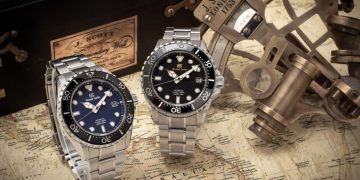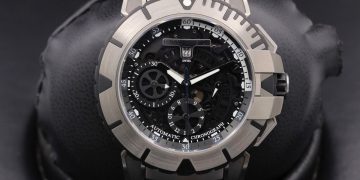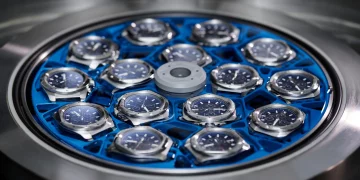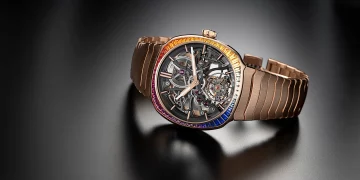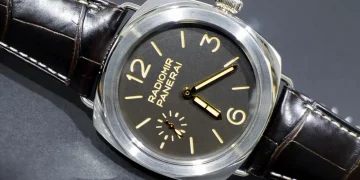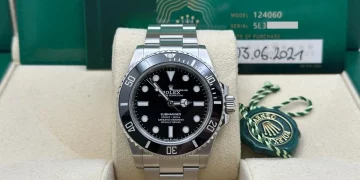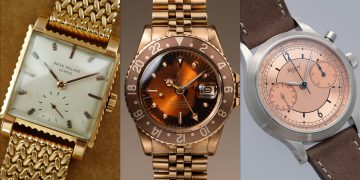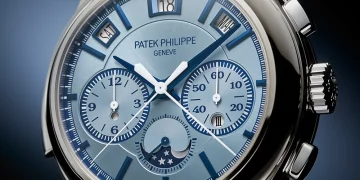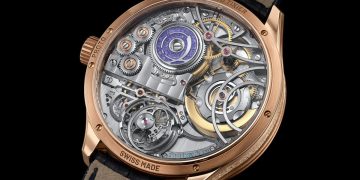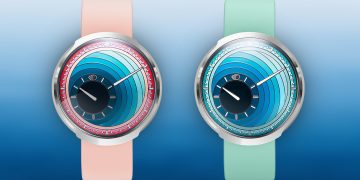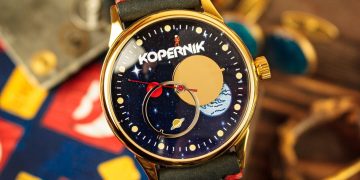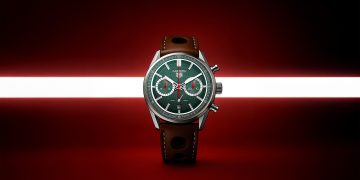Introduction:
When it comes to selecting a timepiece, performance, design, and durability often take the spotlight. However, one aspect that plays a crucial role in the daily enjoyment of a watch, yet sometimes gets overlooked, is comfort. After all, a watch is something you wear on your wrist all day, and if it isn’t comfortable, no matter how great the design or features, it can detract from the overall experience.
In this article, we will explore how a specific watch performs in terms of comfort. From the materials used to the design of the case and the watchband, comfort is influenced by several factors. Does this timepiece live up to expectations in terms of wearability and comfort? Let’s dive into the various elements that contribute to the overall comfort of a watch.
1. Watch Size and Weight: The First Step to Comfort
One of the first things you’ll notice about any watch is its size and weight. These two factors can have a significant impact on comfort, especially for those who wear their watches for long hours.
1.1 Case Size and Shape
The size of a watch case is one of the most important factors influencing comfort. Watches come in a variety of sizes, from smaller, more understated timepieces to larger, bolder models. The ideal case size depends largely on the wearer’s wrist size and personal preference.
If the watch case is too large or too small, it can feel awkward on the wrist. A case that is too large may extend over the edges of the wrist, causing discomfort, while a too-small case may feel insubstantial. Ideally, a well-proportioned watch case should sit comfortably on the wrist without pinching or slipping.
In terms of shape, rounded cases are generally more ergonomic and conform to the natural curvature of the wrist. However, some models feature angular designs that may feel more rigid against the wrist. The shape of the case can therefore influence comfort depending on whether it conforms well to the wearer’s wrist.
1.2 Weight of the Watch
The weight of a watch is another crucial aspect to consider when evaluating comfort. A heavier watch can sometimes be perceived as more luxurious, but if it’s too heavy, it can become tiring to wear for extended periods. On the other hand, a lighter watch can feel more comfortable, especially if you are wearing it all day.
In modern watch design, many manufacturers focus on achieving a balance between durability and weight. Brands like Rolex often use metals like 904L stainless steel and platinum, which are dense and provide weight, yet have been engineered for long-lasting comfort. Meanwhile, titanium—used in watches like those by Grand Seiko and Omega—is a lightweight material that offers a comfortable wearing experience without sacrificing strength.
2. Strap and Band Materials: Key to Comfort
A watch strap or band plays an essential role in how comfortable a watch feels on your wrist. Even the most perfectly designed case can feel uncomfortable if the strap doesn’t fit well or is made from uncomfortable materials. The right strap can make a world of difference.
2.1 Leather Bands
Leather straps are a common choice for luxury watches, offering a sophisticated appearance and a certain level of comfort. However, leather can also be rigid when new and may take some time to break in. Over time, leather straps often mold to the shape of the wrist, becoming more comfortable. However, leather may not be the best option for those with sensitive skin or for people who engage in physical activities that might make leather prone to wear or irritation.
2.2 Metal Bracelets
Metal bracelets, such as those made from stainless steel, titanium, or gold, are another popular option. These types of bands are often durable and stylish but can sometimes feel a bit stiff or heavy. However, if properly adjusted, metal bracelets can be quite comfortable. Many high-end watches, like the Rolex Submariner, feature Oystersteel bracelets with adjustable clasps, allowing the wearer to fine-tune the fit for maximum comfort.
Furthermore, metal bracelets may need to be properly sized to ensure they do not pinch or slide too much. In certain cases, the edges of the links can cause discomfort if they are not finely finished. Brands that focus on high-quality craftsmanship ensure that their metal bands are smooth, polished, and free of sharp edges, which can reduce potential discomfort.
2.3 Rubber and Silicone Straps
For those seeking maximum comfort, rubber or silicone straps can be an excellent choice. They are lightweight, flexible, and breathable, making them ideal for individuals with active lifestyles or those who live in hot climates. These straps also offer increased resistance to water and sweat, which makes them perfect for sports watches or diving watches.
Watches like the Omega Seamaster or Breitling Superocean often use rubber or silicone straps, providing a high level of comfort while maintaining a sporty aesthetic. These straps mold well to the wrist and provide a snug fit without causing irritation.
2.4 NATO and Fabric Straps
NATO straps and other fabric-based bands, such as canvas or nylon, are lightweight and offer a soft feel against the skin. They are highly adjustable and can be a good option for people with wrists of varying sizes. These straps are also breathable, which makes them ideal for wear in warm weather.
While NATO straps are versatile and comfortable, their durability and comfort depend on the material used. Higher-end models often incorporate softer, more durable fabric, while less expensive options may feel rougher or wear out more quickly.

3. Clasp and Closure: Ensuring a Secure Fit
The clasp or closure mechanism of a watch also plays a critical role in comfort. A poorly designed clasp can dig into the wrist or make the watch difficult to adjust, leading to discomfort.
3.1 Deployment Clasps and Butterfly Clasps
Many luxury watches use deployment clasps or butterfly clasps, which open and close with a secure, uniform action. These clasps are easy to adjust and allow for a comfortable fit without the risk of the watch slipping or pinching. They also reduce the risk of the band becoming too tight or too loose during daily wear.
3.2 Traditional Buckles
On the other hand, traditional buckles offer simplicity but may require more frequent adjustments. Over time, traditional buckles can sometimes feel less secure if they aren’t positioned correctly, leading to potential discomfort. However, if well-designed, these buckles can be comfortable and functional.
4. Additional Comfort Features: Ergonomics and Breathability
Beyond the basic size, weight, and strap material, some watches include additional features that enhance comfort:
4.1 Ergonomically Designed Cases
High-end watchmakers often consider ergonomics when designing a watch case. An ergonomically designed case ensures that the watch conforms naturally to the wrist, reducing pressure points and increasing comfort. Watches with curved lugs that fit around the wrist’s contours, such as Omega’s Constellation or Rolex’s Day-Date, provide a more comfortable fit.
4.2 Ventilation and Breathability
In some sports watches, manufacturers focus on the ventilation and breathability of the strap. For instance, a rubber strap with perforations or mesh designs can reduce the buildup of sweat and heat around the wrist, ensuring comfort during intense physical activity.
5. Long-Term Comfort: Breaking in and Adjusting the Fit
A key consideration for comfort is how the watch feels over time. Initially, a watch may feel stiff or tight, especially if the strap hasn’t yet adjusted to the shape of the wrist. As time passes, many high-quality straps and bracelets break in and become more comfortable.
Additionally, a watch that isn’t sized properly can cause discomfort. Many luxury brands offer sizing services to adjust the fit of metal bracelets, ensuring that the watch sits comfortably on the wrist without too much slack or tightness.
6. Conclusion: Is This Watch Comfortable Enough for Everyday Wear?
In conclusion, the comfort of a watch depends on several factors, including the case size, weight, strap material, and closure type. The watch in question has many features designed to maximize comfort, such as an ergonomically shaped case, high-quality strap materials, and adjustable clasps. However, comfort is subjective, and what works for one person may not work for another.
Ultimately, the best way to determine how comfortable a watch is is to try it on and see how it feels on your wrist throughout the day. A watch that fits well, feels light but substantial, and doesn’t cause irritation is likely to provide a pleasant wearing experience, even over extended periods. Whether you prefer a metal bracelet, a rubber strap, or a leather band, the key is finding a watch that suits your personal style and offers the right level of comfort for your lifestyle.


